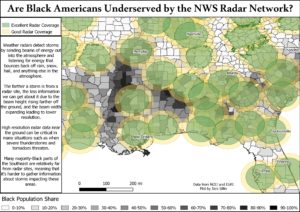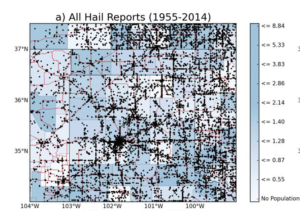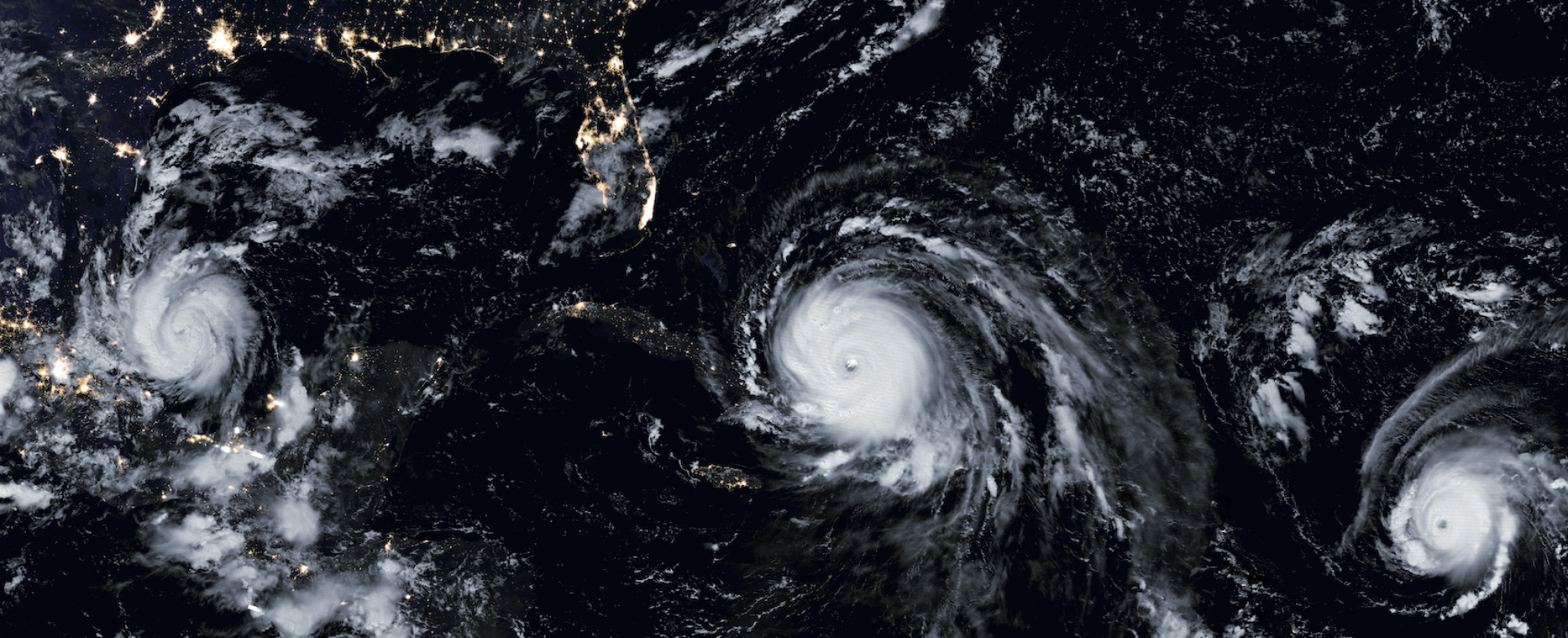Glossary Term
Data Bias
A class imbalance or distortion in the data from what we know is true based on meteorological and other knowledge of interest.
Related Terms: Computational/Model Bias
Data itself can contain biases, which affect the ML model training, evaluation, and deployment. These biases can be caused by underlying human biases (e.g., unintentional or intentional) or by sampling and selection of data. For example, a completely unintentional bias has emerged in which some populations are served by poorer coverage of monitoring equipment like weather radars (see top figure) or hail reports coming mainly along highways and cities with few reports in rural areas (see bottom figure).


